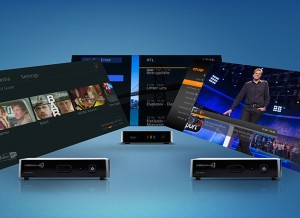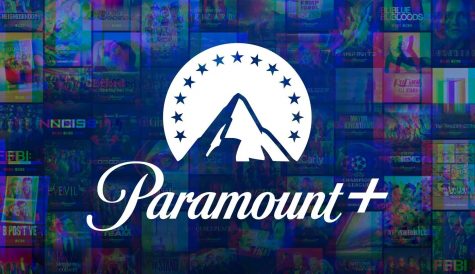
After more than 40 years of operation, DTVE is closing its doors and our website will no longer be updated daily. Thank you for all of your support.
Technologists discuss first- and second-screen TV advancements
 Executives from set-top maker ABOX42, security specialist Verimatrix and online technology specialist Zattoo joined together yesterday to discuss the challenges facing operators as they move to the latest-generation of TV solutions.
Executives from set-top maker ABOX42, security specialist Verimatrix and online technology specialist Zattoo joined together yesterday to discuss the challenges facing operators as they move to the latest-generation of TV solutions.
Speaking at the OTT/ IPTV industry breakfast briefing at the Crowne Plaza hotel in London’s Docklands yesterday, Matthias Greve, CEO of ABOX42, which specialises in IPTV, over-the-top TV and hybrid smart set-top boxes, said that the shift towards new smart set-top boxes is similar to the transition from “Nokia feature phones to, let’s say, an iPhone.”
“It’s more and more application-oriented, service oriented with open standards or HTML5 user interfaces, streaming protocols like HLS,” said Greve.
He added that it is “very important” that the new generation of set-top boxes has to be upgraded over time “because the operators don’t know what they want to do next year. So for the first time in a set-top box deployment, the upgrading is a very important issue.”
Discussing the shortening timespan it now takes for operators and vendors to update services, Greve said: “This is, I think, the major change in the industry. Since we are coming more or less from the internet background, this change is natural in our company. Today, within six months, the customer needs upgrade changes. I think this is the most important challenge for traditional people in the ecosystems if they’re not prepared for the change management, because the change management is actually the core of the project – what you call our lifecycle management.”
Steve Christian, senior vice-president of marketing at Verimatrix, said that, from a security standpoint, it is important to be able to support a range of different solutions, architecture problems, combinations of linear, multicast and unicast solutions and different broadcast and streaming technologies.
“That really underscores the need for flexibility,” said Christian. “Security is just part of this rapid evolution. We need to be very responsive. We need to roll with the punches.”
Discussing the issue of browser plug-ins, Christian said that Verimatrix provides security that enables the uniform, and not siloed, delivery of content to different platforms and devices, which operators want.
“We have 810-plus customers that have reached 70 million set-top boxes around the world, so there’s a pretty good footprint now for what 10 years ago was a nascent company and a new idea of software-based security,” said Christian.
“Today I think software-based security, or cardless security as some people call it, is the gold standard. It enables this kind of flexibility, it enables this ability to move with the different kind of network configurations that we are needing to deal with. And, importantly, it allows you to be responsive in the face of changing threat environments.”
Christian said that with a footprint of more than 110 countries, Verimatrix has a global perspective.
“You see different challenges in different countries, but increasingly the world of video is global. That’s exemplified by what we’re trying to do,” said Christian.
Gernot Jaeger, chief officer, B2B TV solutions at Zattoo – an online TV technology and direct-to-consumer service provider – said that there is a lot of activity at the moment, with cable operators looking to move their product “to the next level”.
“Doing live TV via DVB-C isn’t enough anymore – the bar is way higher,” said Jaeger, claiming that cable operators have to enhance their offerings with non-live and multiscreen elements.
Jaeger said that Zattoo can work with smaller operators to provide hosted and managed end-to-end IPTV solutions.
“What we offer is really a solution that brings the slightly smaller operators onto an eye-level with [Liberty’s] Horizon [platform],” claimed Jaeger.
“Liberty Global, Deutsche Telekom – the big guys – set the bar high. They have interesting products in the market and that puts a lot of pressure on smaller and medium-sized operators to have something that is comparable, but they will not be able to spend half a billion on development. That’s where we come in.”


